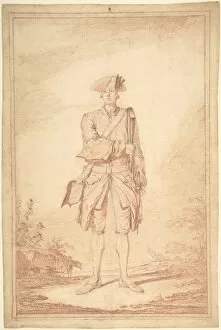Fusil Collection (#4)
"Fusil: A Weapon of History and Revolution" In the tumultuous era of the Spanish Civil War (1936-1939
For sale as Licensed Images
Choose your image, Select your licence and Download the media
"Fusil: A Weapon of History and Revolution" In the tumultuous era of the Spanish Civil War (1936-1939), the fusil played a significant role in shaping the course of events. Manufactured by Mimard & Blachon, both their Simplex and Robust guns were favored choices on the battlefield. These firearms became synonymous with bravery as they accompanied La Guardia, defending their cause. But this weapon's history stretches far beyond that conflict. Take, for instance, its appearance in iconic artworks like "Fighting at the Hotel de Ville" (1833) or "Liberty leading the People" (1830). The fusil stood witness to pivotal moments during revolutions, symbolizing resistance and freedom. Its presence was not limited to artistic depictions alone; it also found itself in military portraits such as "Officer of Norfolk Militia with a Fusil and Gorget" from 1759. This portrayal showcased how this firearm was an integral part of British army equipment during that time. Even Adolf Hitler recognized its significance when he depicted General Von Boum holding a fusil in his cartoon published in Fantasio magazine in 1930. It served as a reminder that even those who opposed progress acknowledged its power. The Belgian Revolution of 1830 saw another chapter written into the story of this versatile weapon. Gustaf Wappers immortalized September 1830's episode at Brussels City Hall square through his oil painting, capturing both chaos and determination with every brushstroke. However, it is important to remember that before these historical events unfolded, there were other battles where victory hinged on wielding a fusil skillfully. One such example is seen in Jean Baptiste Mauzaisse's masterpiece depicting General Jean-Baptiste Jourdan triumphing over Austrian forces at The Battle of Fleurus on June 26th, 1794.




